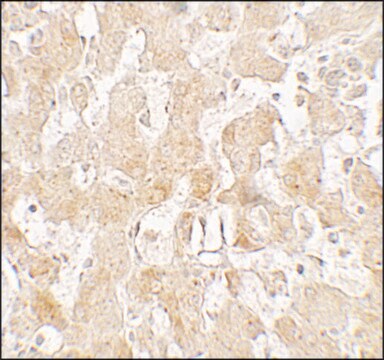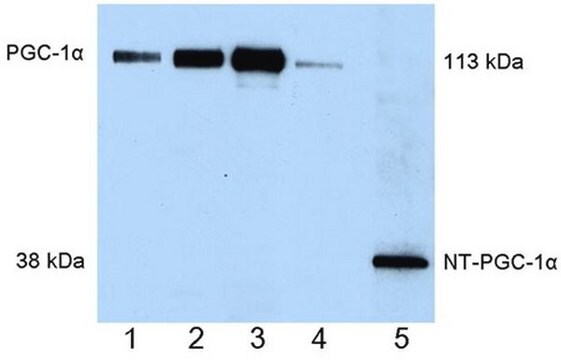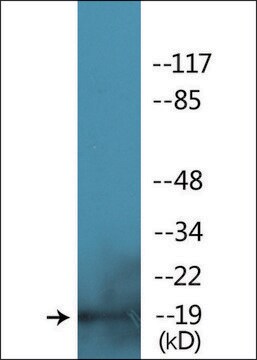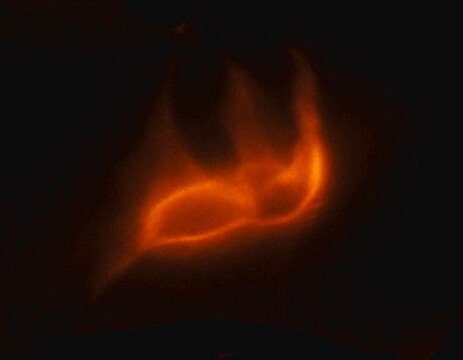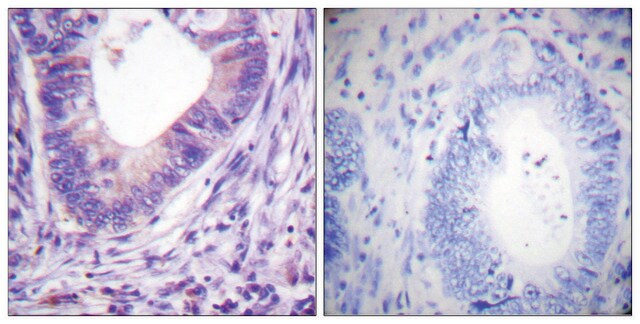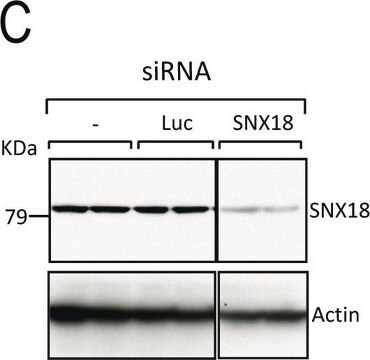Kluczowe dokumenty
U6382
Anti-UCP-1 antibody produced in rabbit
affinity isolated antibody, buffered aqueous solution
Synonim(y):
Ucp1 Antibody, Ucp1 Antibody - Anti-UCP-1 antibody produced in rabbit, Anti-Uncoupling Protein 1
About This Item
Polecane produkty
pochodzenie biologiczne
rabbit
Poziom jakości
białko sprzężone
unconjugated
forma przeciwciała
affinity isolated antibody
rodzaj przeciwciała
primary antibodies
klon
polyclonal
Formularz
buffered aqueous solution
masa cząsteczkowa
antigen ~32 kDa
reaktywność gatunkowa
mouse, human, rat
opakowanie
antibody small pack of 25 μL
metody
immunohistochemistry (formalin-fixed, paraffin-embedded sections): 1:500 using protease-digested sections of mouse brown adipose tissue.
western blot: 1:1,000 using mitochondrial extract of rat brown adipose tissue
numer dostępu UniProt
Warunki transportu
dry ice
temp. przechowywania
−20°C
docelowa modyfikacja potranslacyjna
unmodified
informacje o genach
human ... UCP1(7350)
mouse ... Ucp1(22227)
rat ... Ucp1(24860)
Opis ogólny
Specyficzność
Immunogen
Zastosowanie
Działania biochem./fizjol.
Postać fizyczna
Oświadczenie o zrzeczeniu się odpowiedzialności
Nie możesz znaleźć właściwego produktu?
Wypróbuj nasz Narzędzie selektora produktów.
Kod klasy składowania
10 - Combustible liquids
Klasa zagrożenia wodnego (WGK)
WGK 3
Wybierz jedną z najnowszych wersji:
Masz już ten produkt?
Dokumenty związane z niedawno zakupionymi produktami zostały zamieszczone w Bibliotece dokumentów.
Klienci oglądali również te produkty
Nasz zespół naukowców ma doświadczenie we wszystkich obszarach badań, w tym w naukach przyrodniczych, materiałoznawstwie, syntezie chemicznej, chromatografii, analityce i wielu innych dziedzinach.
Skontaktuj się z zespołem ds. pomocy technicznej

